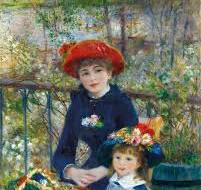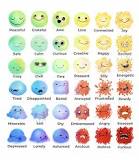The Evolution of Modern Sculptures
Modern sculpture has undergone a fascinating evolution over the past century, reflecting the changing artistic trends and societal values of our time. From the traditional forms of sculpture to abstract and contemporary styles, artists have pushed the boundaries of creativity and innovation in their quest to redefine the art form.
Breaking Traditional Boundaries
Modern sculptures have moved beyond the confines of classical realism, embracing new materials, techniques, and concepts. Artists experiment with a wide range of mediums, including metal, glass, plastic, and even found objects, to create dynamic and thought-provoking pieces that challenge our perceptions of space and form.
Exploring Abstract Expressions
One of the defining characteristics of modern sculpture is its exploration of abstract forms and expressions. Artists use geometric shapes, fluid lines, and unconventional textures to evoke emotions and provoke contemplation. These sculptures often defy traditional representation, inviting viewers to interpret their meaning in a more personal and subjective way.
Embracing Technology and Innovation
Advancements in technology have also played a significant role in shaping modern sculpture. Artists incorporate digital tools, 3D printing, and interactive elements into their work, blurring the lines between art and technology. This fusion of traditional craftsmanship with contemporary methods has led to the creation of immersive and multimedia sculptures that engage all the senses.
Social Commentary and Cultural Critique
Many modern sculptures serve as a platform for social commentary and cultural critique. Artists address pressing issues such as environmental degradation, political unrest, gender equality, and technological dependency through their work. By using sculpture as a medium for activism and awareness-raising, they spark conversations about important global challenges facing society today.
The Future of Modern Sculptures
As we look towards the future, modern sculpture continues to evolve in exciting ways. Artists will likely explore new materials, techniques, and themes to push the boundaries of creativity even further. With an emphasis on innovation, diversity, and inclusivity, modern sculptures will continue to inspire audiences around the world for generations to come.
Exploring Modern Sculpture: Contemporary Artists, Key Features, Notable Examples, and Types
- Are there modern day sculptors?
- What are the features of modern sculpture?
- What are some examples of modern sculptures?
- What are the 4 types of sculpture?
Are there modern day sculptors?
In response to the frequently asked question, “Are there modern-day sculptors?” the answer is a resounding yes. Modern-day sculptors continue to thrive and innovate in the art world, pushing the boundaries of traditional sculpture and exploring new forms of expression. With a diverse range of styles, techniques, and perspectives, contemporary sculptors create captivating works that reflect the complexities of our modern society. From abstract and conceptual pieces to figurative and installation art, modern-day sculptors play a vital role in shaping the ever-evolving landscape of sculpture, ensuring its relevance and significance in today’s artistic discourse.
What are the features of modern sculpture?
The features of modern sculpture encompass a wide range of characteristics that distinguish it from traditional forms. Modern sculptures often prioritize experimentation with materials, embracing a variety of mediums such as metal, glass, and found objects to create innovative and unconventional pieces. Additionally, modern sculptures frequently explore abstract forms and expressions, moving away from strict realism to evoke emotions and provoke contemplation. Artists in the modern era also tend to incorporate technology and interactive elements into their work, blurring the boundaries between art and innovation. Furthermore, modern sculptures often serve as a platform for social commentary and cultural critique, addressing contemporary issues and sparking meaningful conversations within society.
What are some examples of modern sculptures?
When exploring examples of modern sculptures, one encounters a diverse range of artistic expressions that showcase the evolution of the art form. From the iconic “The Thinker” by Auguste Rodin to the abstract forms of Constantin Brancusi’s “Bird in Space,” modern sculptures encompass a wide spectrum of styles and themes. Contemporary artists like Louise Bourgeois with her emotive and introspective works or Antony Gormley with his monumental and interactive installations further expand the boundaries of modern sculpture. Each example not only reflects the artist’s unique vision but also challenges viewers to engage with art in new and thought-provoking ways, illustrating the dynamic nature of modern sculpture in today’s artistic landscape.
What are the 4 types of sculpture?
There are four main types of sculpture that artists commonly work with: relief sculpture, free-standing sculpture, kinetic sculpture, and installation sculpture. Relief sculptures are attached to a background and project outwards, often seen on walls or ceilings. Free-standing sculptures are three-dimensional artworks that can be viewed from all angles. Kinetic sculptures incorporate movement or change, adding an interactive element to the artwork. Installation sculptures are large-scale pieces that transform the space they inhabit, engaging the viewer in a multisensory experience. Each type of sculpture offers unique opportunities for artists to explore form, space, and meaning in their creative expressions.





